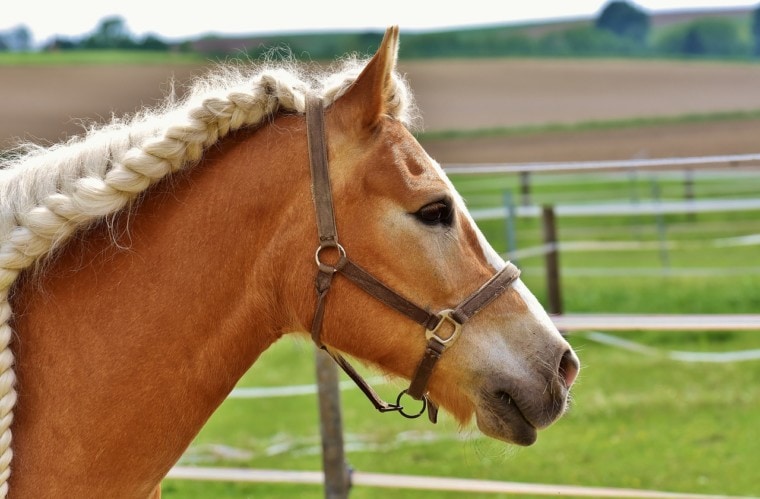
While horse braiding is a matter of maintaining tradition and aesthetics (increasing the horse’s beauty), this practice dates decades and decades ago.
It first started as a matter of function more than form, as equestrians have been braiding their horse’s mane as a way of displaying its prestige at a show or hunt for years. Some horse breeds like Friesians, Morgans, and Arabians even have braided manes as part of the breed’s standards.
Modern equestrians no longer consider these factors when deciding whether to braid a horse’s mane, but the benefits remain relevant even today. So, keep reading and discover why and how you should braid your horse’s mane.
Before You Start
The 9 Tips for Braiding Your Horse’s Mane
People only braid their horse’s mane today to boost the horse’s appearance in show rings. Instead, judges will pay more attention to a horse with a neat, tidy, and uniformly braided mane. But braiding your horse’s mane shouldn’t be for the esthetics alone, as improper braiding irritates the animal’s neck and hair roots.
This discomfort will cause your equine to want to rub against surfaces every time to relieve the irritation from the poor braiding. But unfortunately, constant rubbing means that your horse will never grow a healthier, longer, fuller mane.
Check out these valuable braiding tips that can also help save your horse’s mane.
1. Clean Your Horse’s Mane Before Brushing and Plaiting
Begin by ensuring the mane is clean and free from debris, tangles, and dirt before you start plaiting, as dirty hair is often sticky and difficult to braid.
Additionally, it would be best to wash your mane, especially at the roots, because braiding will expose dandruff and dirt. Allow it to dry out well before you start braiding.
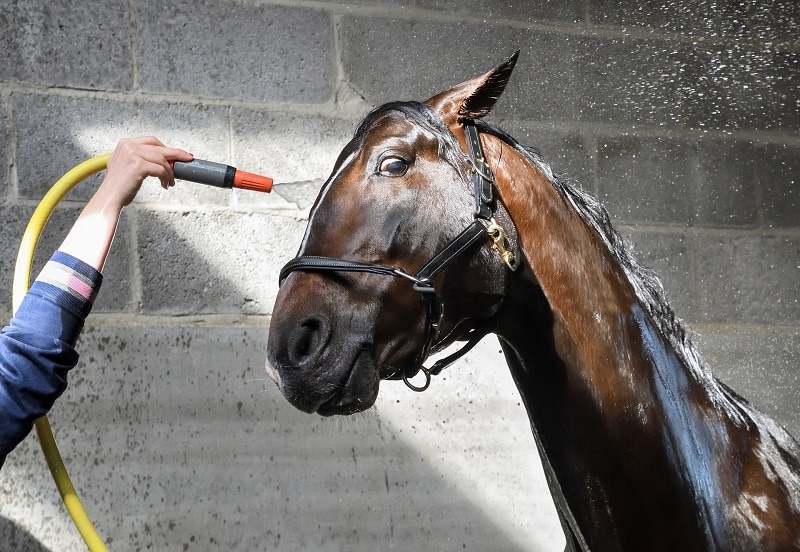
2. Brush Your Horse’s Mane Properly
You can now uniformly dampen the mane a bit with water and a sponge to prevent flyaways when brushing. You can also carefully trim the flyaways using a pair of scissors.
Take time to brush through the mane and perform one last check for tangles before braiding.
3. Only Braid Small Sections at a Time
Horses have long necks that get even longer when they stoop down to eat or drink when you are braiding. For this reason, you may want to braid small sections at a time to avoid causing tension on the mane when the equine moves its head in the process.
The best way to do it is by starting near your horse’s head (at the top of the mane) and start working on sections that consist of just a few inches of the mane. Of course, it appears like you’ll do a lot more braids, but it’s worth protecting your equine’s mane.
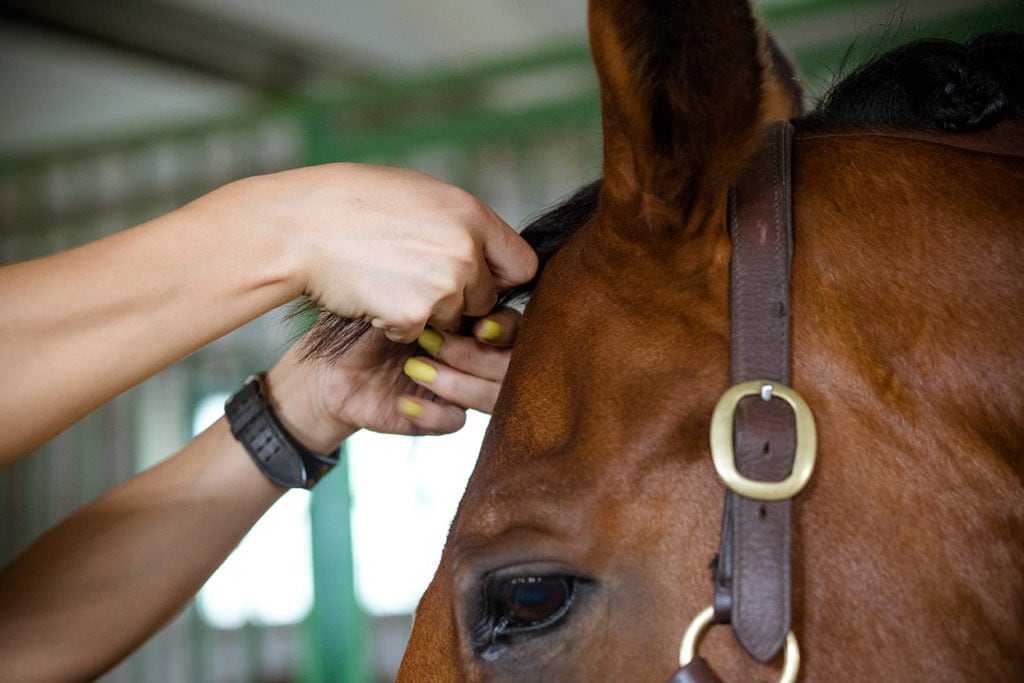
4. Loosely Braid the First Few Crosses of the Braid
Ensure the first few braids you make at the mane’s top are not too tight, as it will tense up and irritate your animal’s neck and mane roots.
There’s no doubt that you’ll need a bit of tension to secure the mane in place, but ensure that the braids are loose enough to secure and also not irritate your animal. Don’t make your horse endure discomfort!
5. Clean and Tighten the Rest of the Braid
After you loosely braid the first 4 or 5 braids, start working on the rest of the mane sections cleanly and tightly. Don’t go overboard on the tightness, though. Just ensure the braids are clean and tight enough to keep the rest of the braid in place.
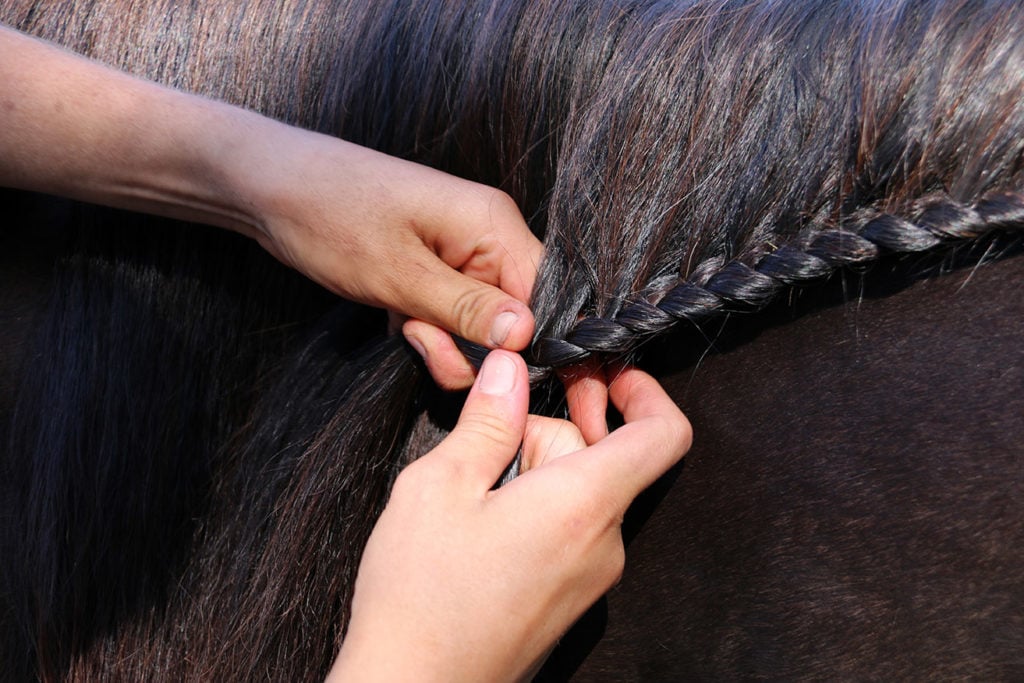
6. Braid to the Bottom
Lazy braiders think that braiding to the end of the mane is pointless. But, going all the way to the mane’s bottom will significantly protect the ends of the horse’s mane and give it a neat end.
It’s best not to leave more than 3–4 inches of the mane’s bottom unplaited.
7. Secure Your Braids with a Black Electrical Tape
You may want to secure every mane section after you plait, and the best way to do it is using electrical tape. This tape is elastic and stretchy and will help you get a tight and secure hold of the braid’s end.
The good thing about this tape over other tapes is that it doesn’t leave excess gunk in the mane. Elastic rubber bands can also work, although using them for an extended period can damage the horse’s mane by cutting off the mane’s bottom over time.
Whatever you decide to use, ensure that you don’t leave it in the braid for more than 7–10 days. It’s best to give the mane time out to breathe.
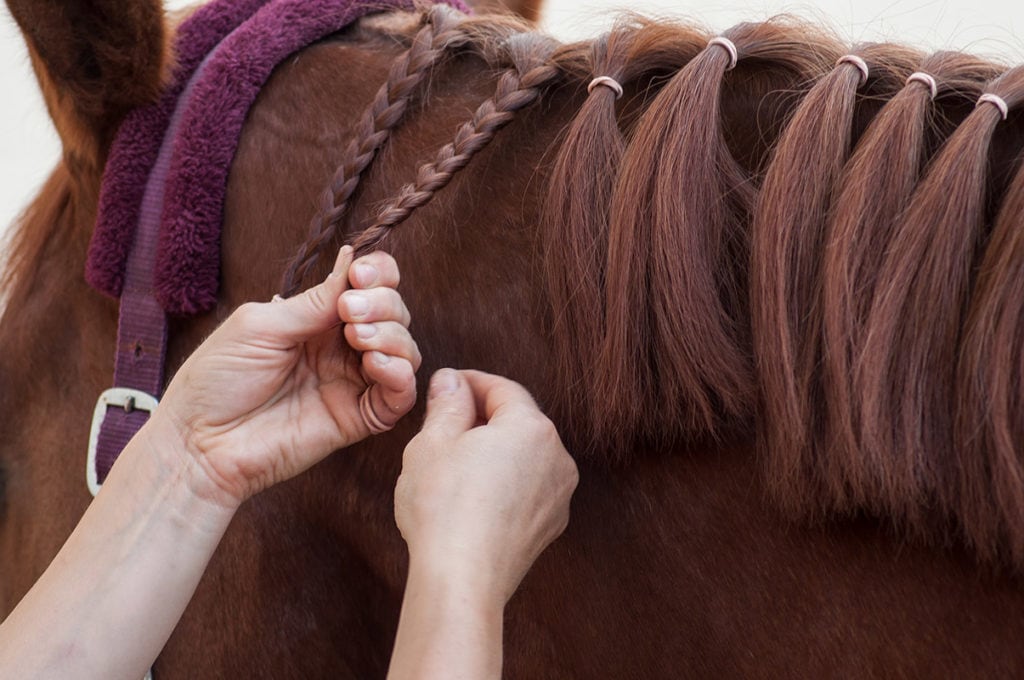
8. Tuck Braids if Your Horse’s Mane Is Long
A long mane is fantastic, but the horse may damage the braids when eating or drinking. Tucking the braids will reduce how long they hang.
9. Avoid Braiding Near the Withers
Unfortunately, the withers and places around it receive the most tension throughout the horse’s activities. Braiding the area will only add to the horse’s discomfort, so it would be best to leave the section of the mane nearest it unbraided.
And, yes! Even loose braids can cause so much tension and irritation at the withers.

 Reasons for Braiding a Horse’s Mane
Reasons for Braiding a Horse’s Mane
Prevent Interference from Tangling Hair When Horse Riding
A good mane braid improves the safety of both the horse and the rider in show rings as it keeps the mane from jumping into your face or getting into the rider’s equipment when jumping.
It Enhances a Horse’s Appearance
Equestrians used specific braids and positioning to show off their horses’ curves. Braids would allow people to tell a prestigious equine from a lesser ranking equine in battles or hunts.
Horse owners would braid thoroughbreds and other prestigious horses during major events like hunts, dressage, shows, and races to set them apart from the rest of the group.
It wasn’t and still is not uncommon for braids or mane-plaiting to determine a horse’s win in many modern dressage events.
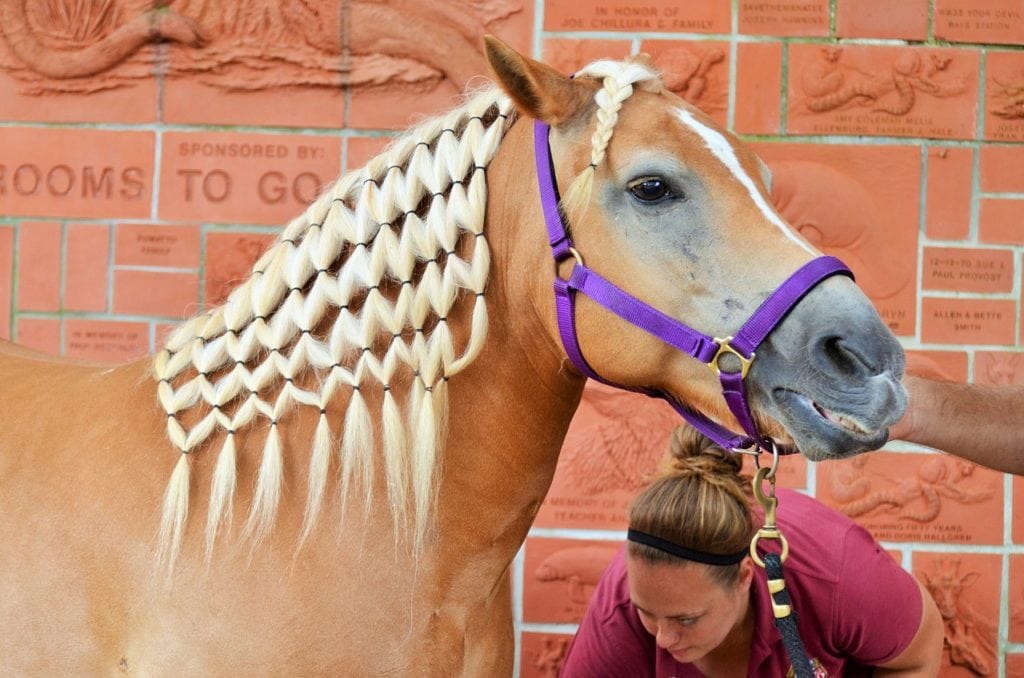
Safeguarding the Horse From Damaging Its Mane
Farmers and laborers also implemented mane braiding to keep the horse from harming its mane and tail or becoming tangled in farm equipment when working. It was a prime safety concern for both the equine and farmers during these times.
Prevents Knotting
Apart from practicalities and aesthetics, horsehair braiding helps keep hair from knotting due to wind and dirt.
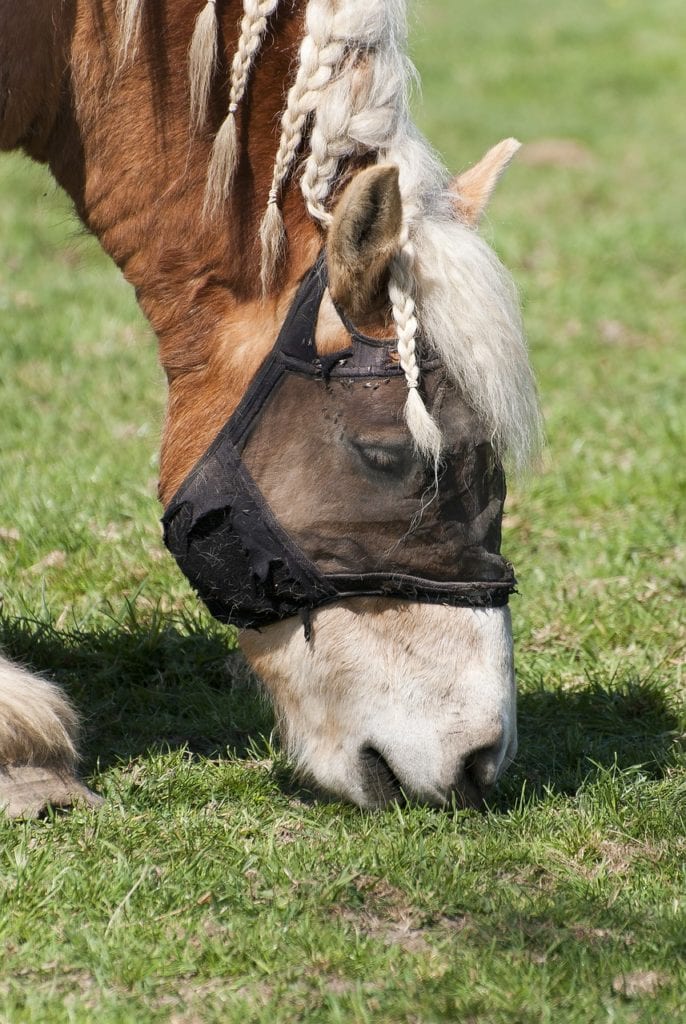
In Summary
Braiding your horse’s mane enhances your animal’s polished appearance, but a well-woven braid is often an excellent way to show how much you take care of your animal.
Your horse is a prized possession, and you would want it to look its best. Luckily, you have the tips for doing just that!
See also: Why Do Horses Have Manes? (The Answer Might Surprise You)
Featured Image Credit: Pixabay

 Reasons for Braiding a Horse’s Mane
Reasons for Braiding a Horse’s Mane





